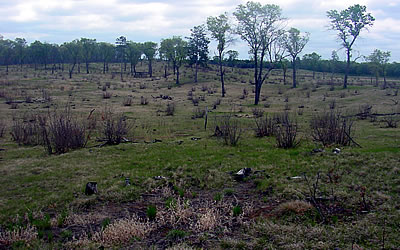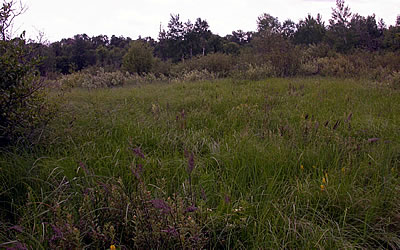Site Description
Established in 1939, this 43,696 acre refuge sits on the site of former Glacial Lake Wisconsin, a flat, poorly-drained area of bogs, flowages, and wooded islands. Necedah contains a mix of pine, oak, and aspen forests, sedge meadows, emergent/submergent marsh, open water, grasslands, and savanna.

Necedah National Wildlife Refuge, photo by Rich King

Necedah National Wildlife Refuge, photo by Rich King
Ornithological Importance
A wide variety of species breed at Necedah, including least and American bitterns, trumpeter swan, osprey, ruffed grouse, black and yellow-billed cuckoos, red-headed woodpecker, willow flycatcher, sedge wren, golden-winged warbler, rose-breasted grosbeak, field sparrow, Henslow’s sparrow, dickcissel, and eastern meadowlark. Necedah is home to a reintroduced population of federally endangered whooping cranes, part of an effort to establish a migratory population in the eastern U.S. Thousands of waterfowl and sandhill cranes use the refuge during fall migration.